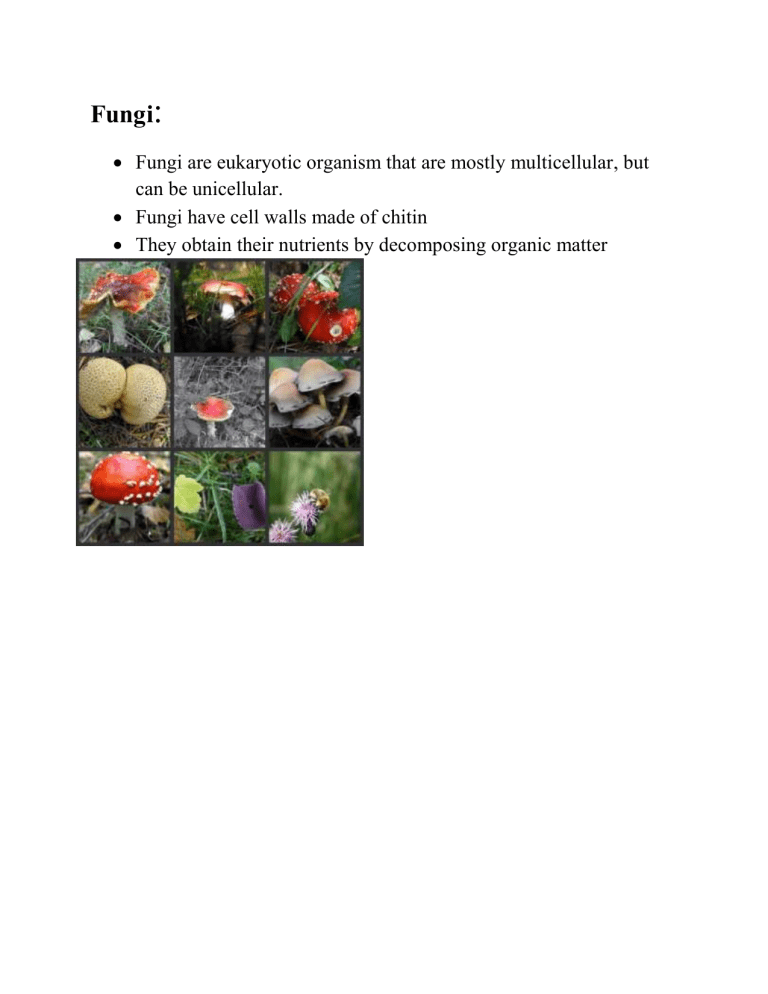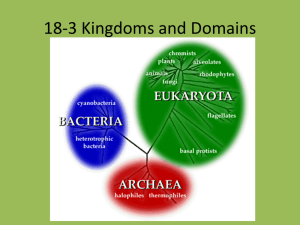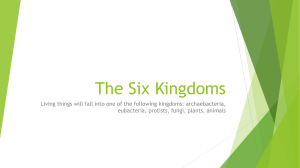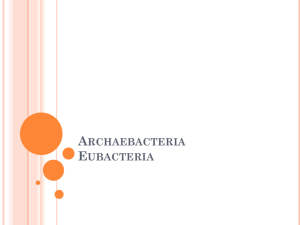: Fungi

Fungi
:
Fungi are eukaryotic organism that are mostly multicellular, but can be unicellular.
Fungi have cell walls made of chitin
They obtain their nutrients by decomposing organic matter
Archaebacteria
:
Say hello to Archaebacteria! It’s what we call an extremophile.
Archeabactia love extreme environments. These guys don’t need oxygen or light
Some live in extremely hot conditions (near volcanic activity) while some live in extremely salty environments like the Dead Sea.
Some Archaebacteria make their own food while others absorb organic materials from other organisms.
Archaebacteria have cell walls but they do not contain peptidoglycan
Eubacteria
:
This is eubacteria! You can find them many places, including inside your digestive system!
Notice that the eubacteria does not have a nucleus.
Some eubacteria make their own food by photosynthesis while others absorb organic materials in both living and dead organisms.
The cell wall of eubacteria contains peptidoglycan, which consists of amino acids and sugars that make up a mesh like layer
Fun fact: do you think that all bacteria are bad? Think again! There are so many bacteria keeping your digestive system healthy. We can even find bacteria in some foods such as yogurts, or bacteria that you don’t want to eat in rotten foods!
Protista
:
Protists are tiny microorganisms!
They are diverse group of eukaryotes that can be unicellular, or multicellular, most are unicellular though.
Protists do NOT have specialized tissues, a characteristic that distinguishes them from other eukaryotes.
Some make their own food and some cannot.
Protists have cell walls made of cellulose
Plantae
:
Plants are eukaryotic organisms that are multicellular.
They have cell walls made of cellulose.
They also have organelles called chloroplasts that allow them to make their own nutrients though photosynthesis.
Animalia
:
Animals are eukaryotic organisms that are multicellular.
They obtain their nutrients in various ways, but cannot create their own nutrients.
Their cell do not have cell walls




